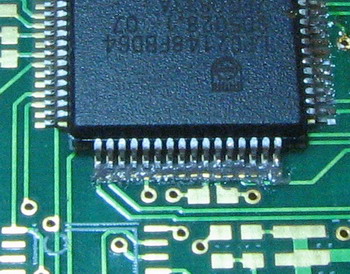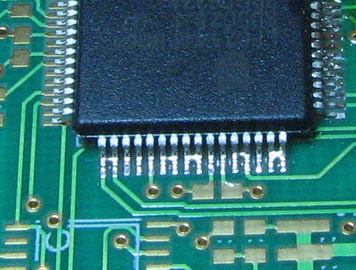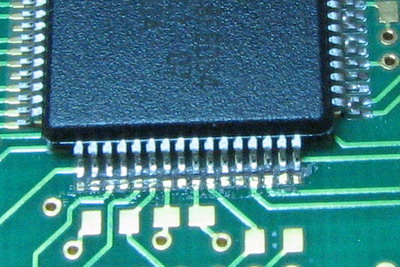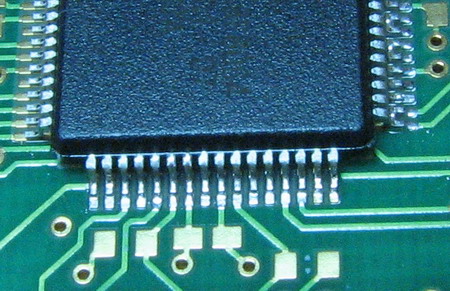Difference between revisions of "Tiny Assembly"
| Line 1: | Line 1: | ||
== LEA-4P Mounting == | |||
It is advised not to use hot air reflow rework station / solder paste for this assembly as it is quite easy to "blow" solder underneath the LEA-4P. Instead apply a small amount of solder flux paste and a fine tip soldering iron w/ fine solder. Print out the schematic to see the required pin wiring. Solder only the necessary pins, you will realize why if you ever have to remove the LEA-4P module from the PCB. | |||
== Solder Paste Usage == | == Solder Paste Usage == | ||
Revision as of 17:48, 10 July 2007
LEA-4P Mounting
It is advised not to use hot air reflow rework station / solder paste for this assembly as it is quite easy to "blow" solder underneath the LEA-4P. Instead apply a small amount of solder flux paste and a fine tip soldering iron w/ fine solder. Print out the schematic to see the required pin wiring. Solder only the necessary pins, you will realize why if you ever have to remove the LEA-4P module from the PCB.
Solder Paste Usage
Solder paste can easily become your secret weapon against the difficult placing of the fine-pitch components in use in this project. The most crucial parameter you can control is how much solder paste is used. If too much is used (even 1/10 of a gram too much), you will be left removing many solder bridges between pins and pads manually. Alternatively if too little is used you will be left individually soldering pins.
Below is an example of too much
this is the result after reflowing: 5 different solder bridges that must be removed. Sometimes it is as easy as applying a small amount of liquid flux to the area then dragging a hot micro tipped iron between the two pins, drawing the bridge towards the pad. You may also want to try copper braid for wicking the excess solder away. I often find this removes too much solder.
Below is an image where an adequate amount of solder paste was applied.
The results of the above solder paste.



